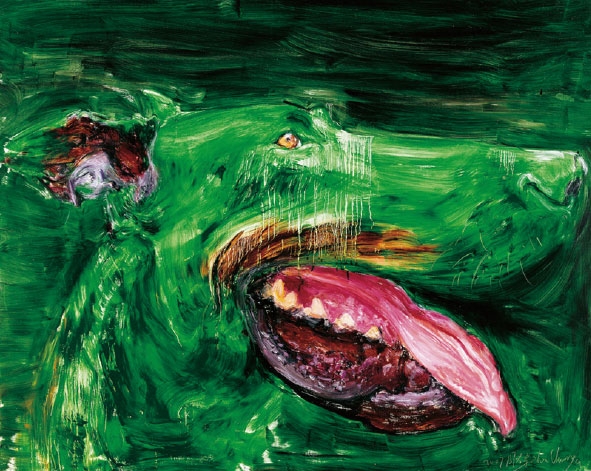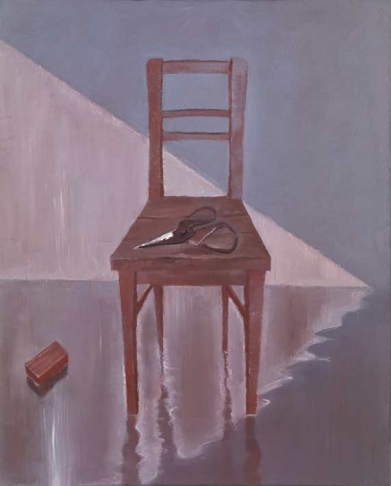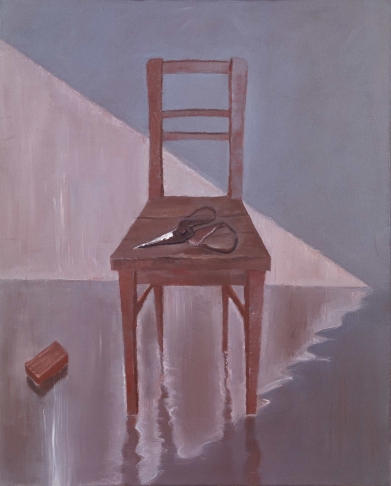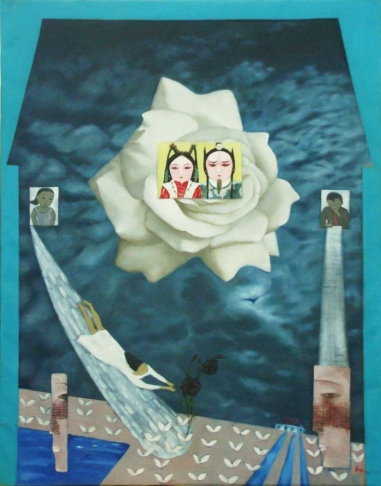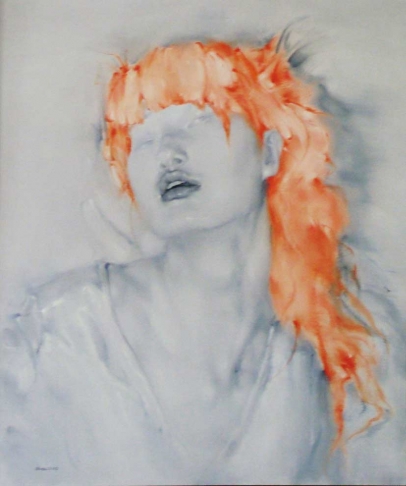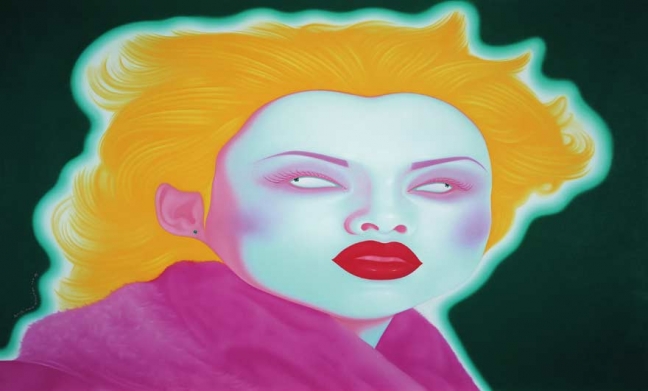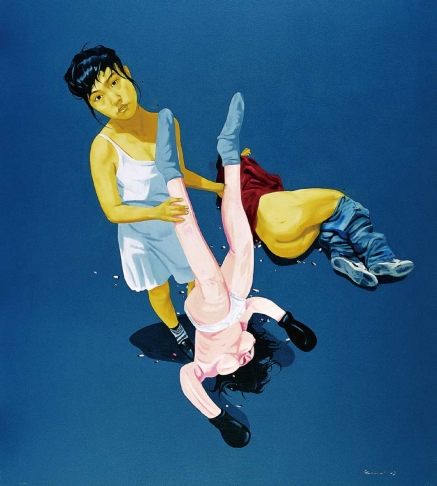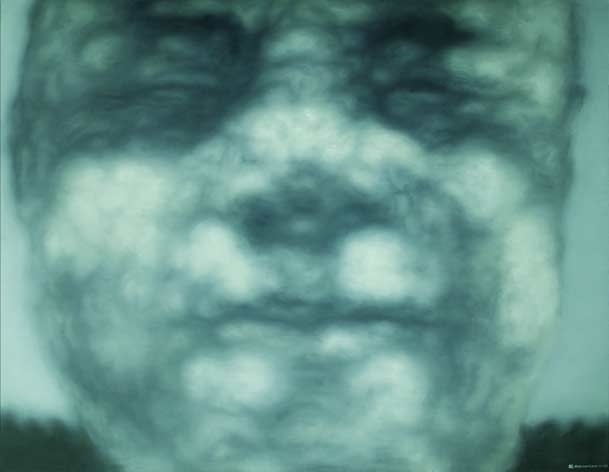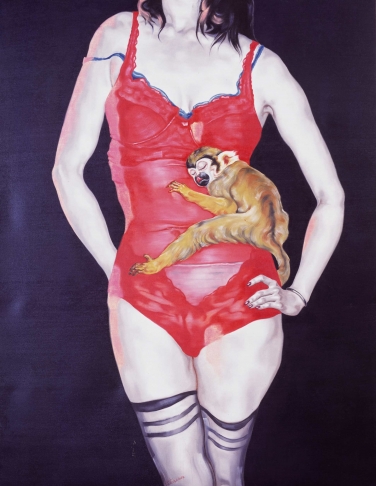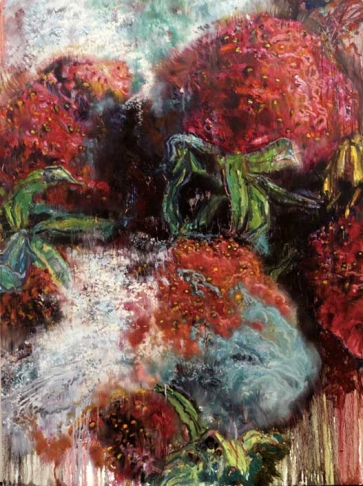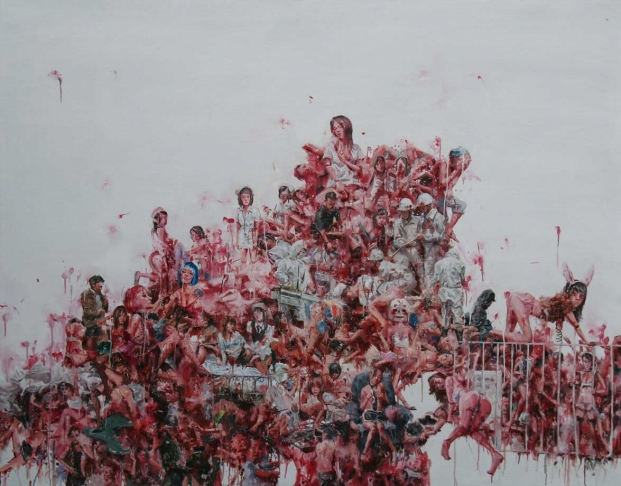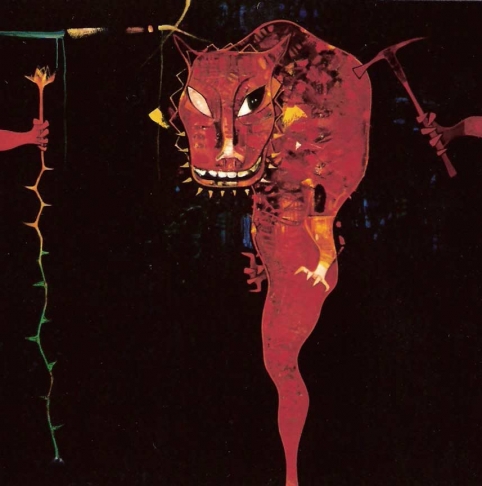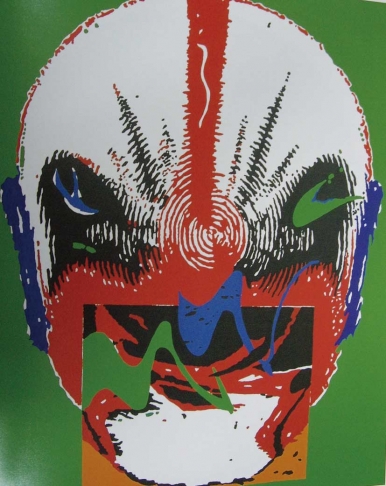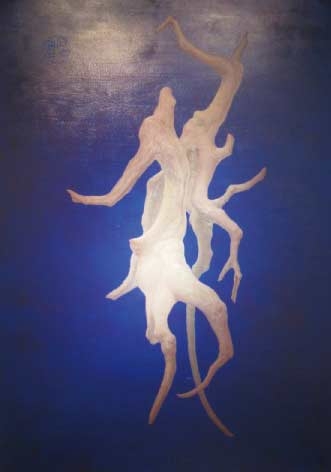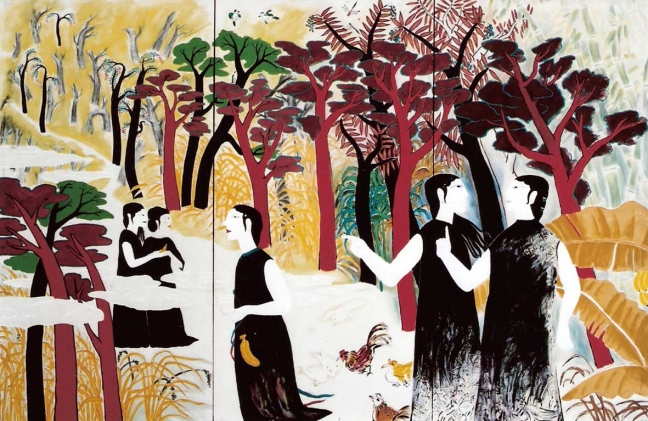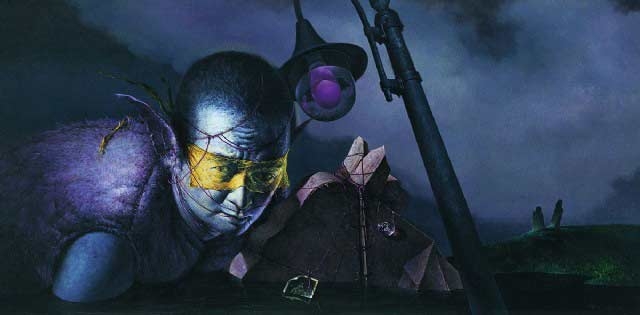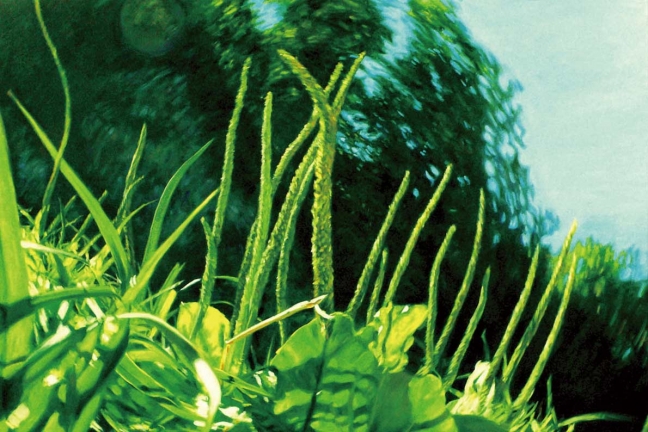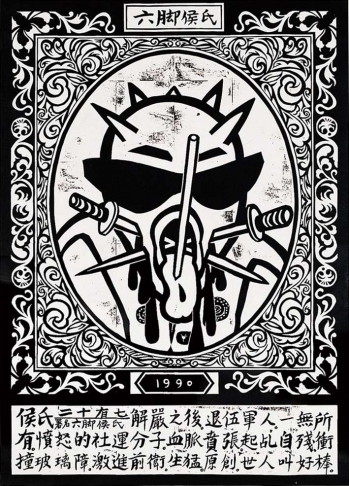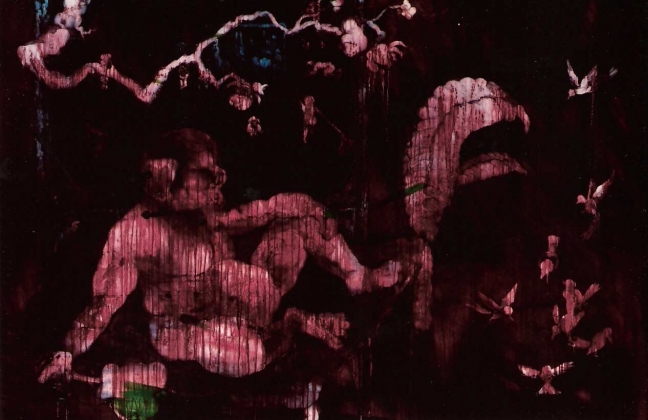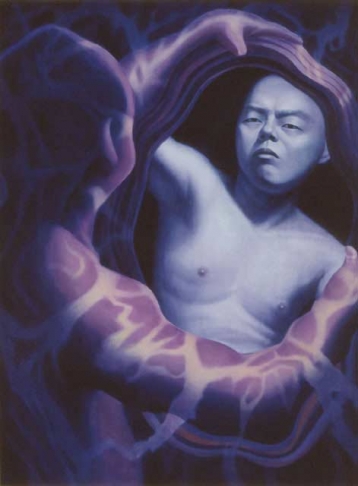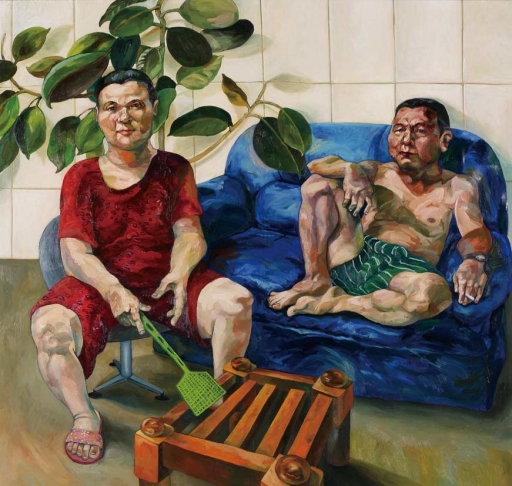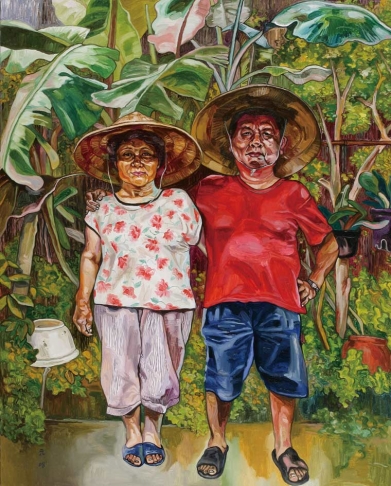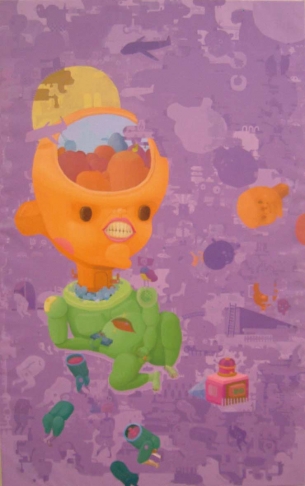Lntimate Trend
2008.07.05~2008.09.02
09:00 - 17:00
Painting from Sichuan and Taiwan Nowadays Beijing and Shanhai are the focus of contemporary art in China. However, I like to cast my eyes on another territory and using it as a comparison against the case in Taiwan. In this exhibition,
Chin-ch’ao” is used as the title, also refers to the confluence of the contemporary art in Sichuan and Taiwan. The relations between the two are on one hand very close due to the common language and culture; but on the other hand far away with each other due to the historical changes. The comparative Esthetics of Oil Paintings One of the biggest differences between the two regions’ contemporary paintings is that more Sichuan artists make figure paintings, and their works closely related to the politically and nationalistically collective memory of the time, while less Taiwan artists adopt similar subjects. To know the reason, we need look into the development of contemporary art in Taiwan. The year of 1987 is a divide. After the lifting of martial law, quite a few alternative spaces presented works that claimed to be avant-garde, multiple perspectives, open and liberal, which means a total liberation of art form. The installation art flourishing from the 90’s particularly allows emerging artists to search for expressive symbols and specific subjects of their own. Artists get satisfied by expressing themselves with the unfixed mechanism of exhibitions, without any consideration on the market side. Inasmuch, even an artist who owns credits of many exhibitions, it does not promise his/her sale. Along the line, comes behavior art, conceptual art, multimedia art, techno art, and new media art. There are fewer painters left on the stage of Taiwan’s contemporary art. Among those who paint, fewer works are done on the subject of figure painting than construction or virtuality. It appears to be difficult to draw out the contextual development of oil paintings within the comprehensive art environment. However, figure painting has been a popular form in contemporary China. Even if some works are not categorized as figure painting, they usually present another reality from the deconstruction of figures. Along with the political reform and opening, the introduction of capitalism quickly changed people’s life and the contents of paintings. Subjects of politics and nationalism came into art as nutrients rather than harm. The figure painting now seems to be an extension of the mirror phase of childhood in psychological terms. Artists paint with reflections and the liberation of oppression. Through their specific observation, the rumination on human subject and the congregational need in human society are more emphasized. Moreover, by the artistic angle, the depicted figures present a depth of human nature, an image and form hard to reveal, and the ultimate concerns of the artists.
Chin-ch’ao” is used as the title, also refers to the confluence of the contemporary art in Sichuan and Taiwan. The relations between the two are on one hand very close due to the common language and culture; but on the other hand far away with each other due to the historical changes. The comparative Esthetics of Oil Paintings One of the biggest differences between the two regions’ contemporary paintings is that more Sichuan artists make figure paintings, and their works closely related to the politically and nationalistically collective memory of the time, while less Taiwan artists adopt similar subjects. To know the reason, we need look into the development of contemporary art in Taiwan. The year of 1987 is a divide. After the lifting of martial law, quite a few alternative spaces presented works that claimed to be avant-garde, multiple perspectives, open and liberal, which means a total liberation of art form. The installation art flourishing from the 90’s particularly allows emerging artists to search for expressive symbols and specific subjects of their own. Artists get satisfied by expressing themselves with the unfixed mechanism of exhibitions, without any consideration on the market side. Inasmuch, even an artist who owns credits of many exhibitions, it does not promise his/her sale. Along the line, comes behavior art, conceptual art, multimedia art, techno art, and new media art. There are fewer painters left on the stage of Taiwan’s contemporary art. Among those who paint, fewer works are done on the subject of figure painting than construction or virtuality. It appears to be difficult to draw out the contextual development of oil paintings within the comprehensive art environment. However, figure painting has been a popular form in contemporary China. Even if some works are not categorized as figure painting, they usually present another reality from the deconstruction of figures. Along with the political reform and opening, the introduction of capitalism quickly changed people’s life and the contents of paintings. Subjects of politics and nationalism came into art as nutrients rather than harm. The figure painting now seems to be an extension of the mirror phase of childhood in psychological terms. Artists paint with reflections and the liberation of oppression. Through their specific observation, the rumination on human subject and the congregational need in human society are more emphasized. Moreover, by the artistic angle, the depicted figures present a depth of human nature, an image and form hard to reveal, and the ultimate concerns of the artists.
Painting from Sichuan and Taiwan Nowadays Beijing and Shanhai are the focus of contemporary art in China. However, I like to cast my eyes on another territory and using it as a comparison against the case in Taiwan. In this exhibition,
Chin-ch’ao” is used as the title, also refers to the confluence of the contemporary art in Sichuan and Taiwan. The relations between the two are on one hand very close due to the common language and culture; but on the other hand far away with each other due to the historical changes. The comparative Esthetics of Oil Paintings One of the biggest differences between the two regions’ contemporary paintings is that more Sichuan artists make figure paintings, and their works closely related to the politically and nationalistically collective memory of the time, while less Taiwan artists adopt similar subjects. To know the reason, we need look into the development of contemporary art in Taiwan. The year of 1987 is a divide. After the lifting of martial law, quite a few alternative spaces presented works that claimed to be avant-garde, multiple perspectives, open and liberal, which means a total liberation of art form. The installation art flourishing from the 90’s particularly allows emerging artists to search for expressive symbols and specific subjects of their own. Artists get satisfied by expressing themselves with the unfixed mechanism of exhibitions, without any consideration on the market side. Inasmuch, even an artist who owns credits of many exhibitions, it does not promise his/her sale. Along the line, comes behavior art, conceptual art, multimedia art, techno art, and new media art. There are fewer painters left on the stage of Taiwan’s contemporary art. Among those who paint, fewer works are done on the subject of figure painting than construction or virtuality. It appears to be difficult to draw out the contextual development of oil paintings within the comprehensive art environment. However, figure painting has been a popular form in contemporary China. Even if some works are not categorized as figure painting, they usually present another reality from the deconstruction of figures. Along with the political reform and opening, the introduction of capitalism quickly changed people’s life and the contents of paintings. Subjects of politics and nationalism came into art as nutrients rather than harm. The figure painting now seems to be an extension of the mirror phase of childhood in psychological terms. Artists paint with reflections and the liberation of oppression. Through their specific observation, the rumination on human subject and the congregational need in human society are more emphasized. Moreover, by the artistic angle, the depicted figures present a depth of human nature, an image and form hard to reveal, and the ultimate concerns of the artists.
Chin-ch’ao” is used as the title, also refers to the confluence of the contemporary art in Sichuan and Taiwan. The relations between the two are on one hand very close due to the common language and culture; but on the other hand far away with each other due to the historical changes. The comparative Esthetics of Oil Paintings One of the biggest differences between the two regions’ contemporary paintings is that more Sichuan artists make figure paintings, and their works closely related to the politically and nationalistically collective memory of the time, while less Taiwan artists adopt similar subjects. To know the reason, we need look into the development of contemporary art in Taiwan. The year of 1987 is a divide. After the lifting of martial law, quite a few alternative spaces presented works that claimed to be avant-garde, multiple perspectives, open and liberal, which means a total liberation of art form. The installation art flourishing from the 90’s particularly allows emerging artists to search for expressive symbols and specific subjects of their own. Artists get satisfied by expressing themselves with the unfixed mechanism of exhibitions, without any consideration on the market side. Inasmuch, even an artist who owns credits of many exhibitions, it does not promise his/her sale. Along the line, comes behavior art, conceptual art, multimedia art, techno art, and new media art. There are fewer painters left on the stage of Taiwan’s contemporary art. Among those who paint, fewer works are done on the subject of figure painting than construction or virtuality. It appears to be difficult to draw out the contextual development of oil paintings within the comprehensive art environment. However, figure painting has been a popular form in contemporary China. Even if some works are not categorized as figure painting, they usually present another reality from the deconstruction of figures. Along with the political reform and opening, the introduction of capitalism quickly changed people’s life and the contents of paintings. Subjects of politics and nationalism came into art as nutrients rather than harm. The figure painting now seems to be an extension of the mirror phase of childhood in psychological terms. Artists paint with reflections and the liberation of oppression. Through their specific observation, the rumination on human subject and the congregational need in human society are more emphasized. Moreover, by the artistic angle, the depicted figures present a depth of human nature, an image and form hard to reveal, and the ultimate concerns of the artists.
